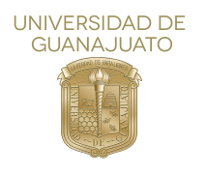Por favor, use este identificador para citar o enlazar este ítem:
http://repositorio.ugto.mx/handle/20.500.12059/13737Registro completo de metadatos
| Campo DC | Valor | Lengua/Idioma |
|---|---|---|
| dc.rights.license | http://creativecommons.org/licenses/by-nc/4.0 | es_MX |
| dc.creator | Kaur Kataria, Tejinder | - |
| dc.creator | Olvera-Cervantes, José Luis | - |
| dc.creator | Corona-Chávez, Alonso | - |
| dc.creator | Rojas-Laguna, Roberto | - |
| dc.creator | Sosa-Morales, María Elena | - |
| dc.date.accessioned | 2025-09-22T16:05:13Z | - |
| dc.date.available | 2025-09-22T16:05:13Z | - |
| dc.date.issued | 2017-03-23 | - |
| dc.identifier.issn | 1532-2386 | - |
| dc.identifier.uri | http://repositorio.ugto.mx/handle/20.500.12059/13737 | - |
| dc.description | Autora de correspondencia: Sosa-Morales, María Elena (Universidad de Guanajuato) | - |
| dc.description | Afiliaciones: Kaur Kataria, Tejinder (Universidad de Guanajuato); Olvera-Cervantes, José Luis (Instituto Nacional de Astrofísica, Óptica y Electrónica); Corona-Chávez, Alonso (Universidad de Guanajuato; Instituto Nacional de Astrofísica, Óptica y Electrónica); Rojas-Laguna, Roberto (Universidad de Guanajuato); Sosa-Morales, María Elena (Universidad de Guanajuato) | - |
| dc.description | Base de datos de indización: Web of Science | - |
| dc.description.abstract | Dielectric properties (DPs) of selected fruits: guava (Psidium guajava), mamey sapote (Pouteria sapota), red prickly pear (fruit from Opuntia streptacantha), and white prickly pear (fruit from Opuntia ficus-indica), as well as nopal (young cactus pads or cladodes from Opuntia ficus-indica) were studied. DPs were determined using the open-ended coaxial probe method at microwave frequencies (500 MHz–2 GHz) and temperatures of 20, 40, and 60ºC. At 20ºC and 915 MHz for unripe fruits, dielectric constant values ranged from 65.7 to 70.9, while the loss factor had values between 8.4 and 20.7. Both dielectric constant and dielectric loss factor were affected by temperature and frequency (p < 0.05). For example, loss factor for red prickly pear at 2450 MHz decreased from 13.88 at 20ºC to 12.8 at 40ºC and 11.7 at 60ºC. DPs of fruits were also affected by their ripening (quantified through the maturity index). In addition, penetration depth decreased with increasing frequency, ranging from 1.98 to 4.80 cm at 915 MHz and from 0.25 to 0.41 cm at 5800 MHz. Results are valuable to develop further applications with microwave technology for these foods, such as microwave- assisted disinfestation treatments or microwave drying. | es_MX |
| dc.format | application/pdf | - |
| dc.language.iso | eng | es_MX |
| dc.publisher | Taylor & Francis Inc | es_MX |
| dc.relation | http://dx.doi.org/10.1080/10942912.2016.1261154 | - |
| dc.relation | WOS:000418581500008 | - |
| dc.rights | info:eu-repo/semantics/openAccess | es_MX |
| dc.source | International Journal of Food Properties (1532-2386) vol. 20 número 12 (2017) | - |
| dc.title | Dielectric properties of guava, mamey sapote, prickly pears, and Nopal in the microwave range | es_MX |
| dc.type | info:eu-repo/semantics/article | es_MX |
| dc.subject.keywords | Dielectric properties | es_MX |
| dc.subject.keywords | Guava fruit | - |
| dc.subject.keywords | Mamey sapote | - |
| dc.subject.keywords | Prickly pear | - |
| dc.subject.keywords | Nopal | - |
| dc.subject.keywords | Insect pests | - |
| dc.subject.keywords | Fruits | - |
| dc.subject.keywords | Web of Science | - |
| dc.type.version | info:eu-repo/semantics/publishedVersion | es_MX |
| Aparece en las colecciones: | Documentos indizados en bases de datos | |
Archivos en este ítem:
| Archivo | Descripción | Tamaño | Formato | |
|---|---|---|---|---|
| 1010801094291220161261154.pdf | 1.47 MB | Adobe PDF | Visualizar/Abrir |
Los ítems de DSpace están protegidos por copyright, con todos los derechos reservados, a menos que se indique lo contrario.

